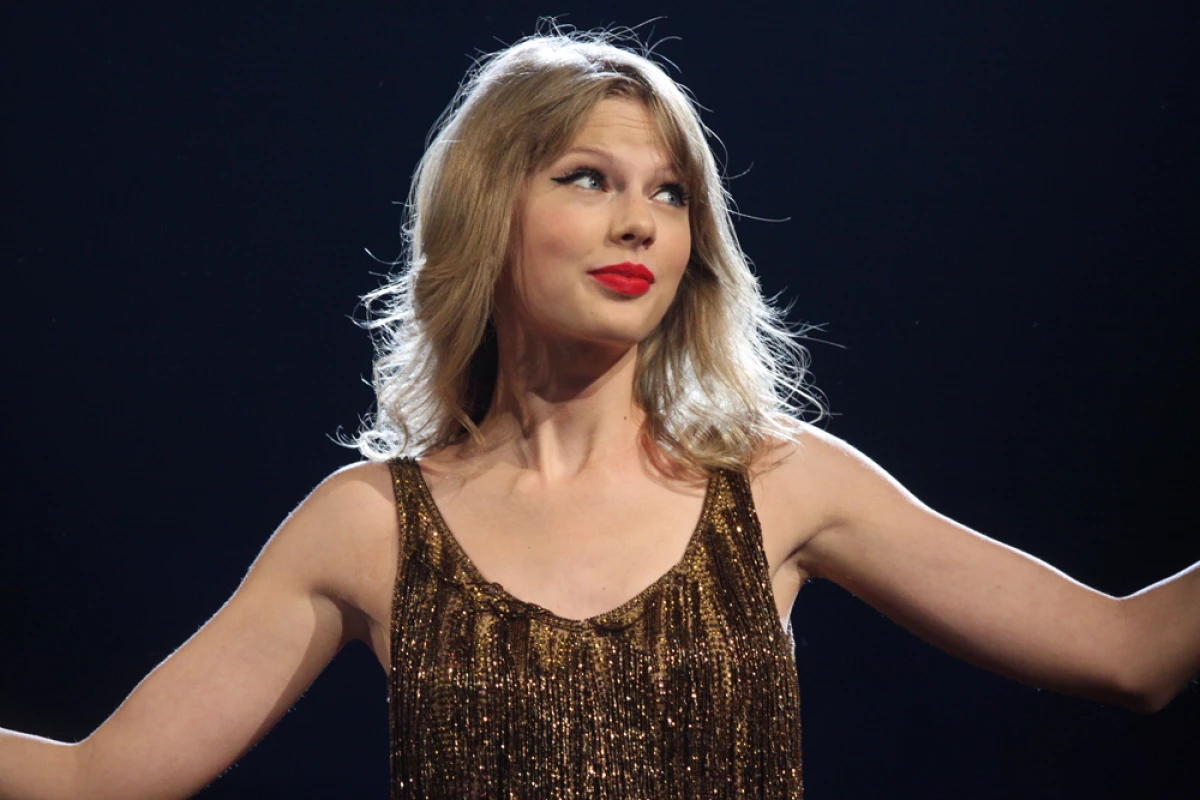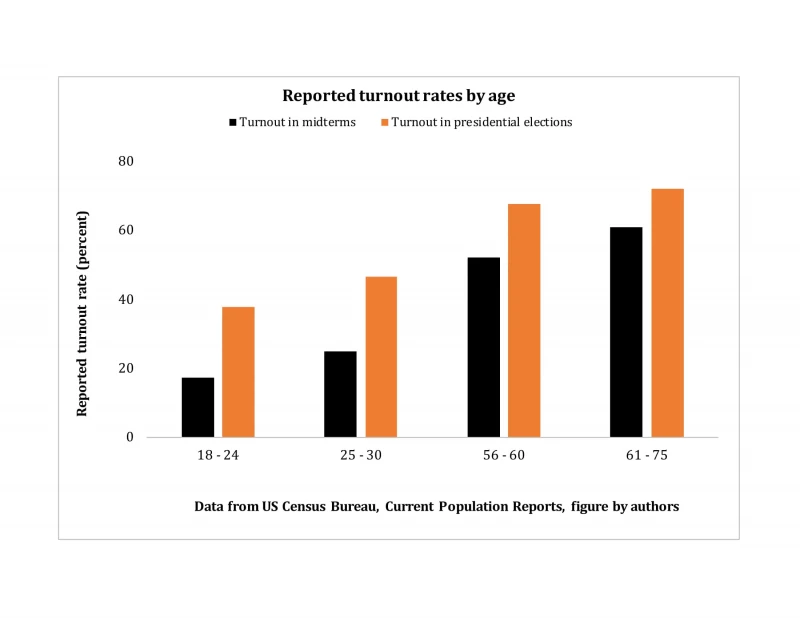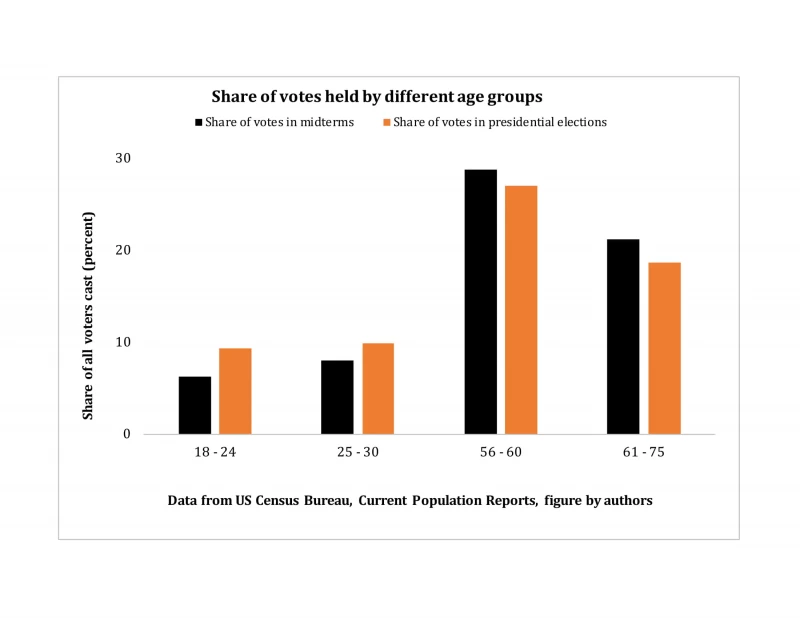- Home /
- Research /
- Reports & Analysis /
- Could Anything – Even Taylor Swift – Boost the Youth Vote in 2018?
Could Anything – Even Taylor Swift – Boost the Youth Vote in 2018?
Last week, Taylor Swift endorsed two candidates on Instagram, speaking to a group that could use encouragement: young people, who often fail to vote in midterm elections.

Credit: Wikipedia Commons
Authors
- Jan E. Leighley,
- Jonathan Nagler
Area of Study
Tags
This article was originally published at The Washington Post.
Last week, with a post on Instagram, Taylor Swift urged young people to vote. She specifically endorsed two candidates, explained why she voted for them, and suggested that others should rely on their values in deciding how to vote. She explicitly spoke to a group that could use encouragement: young people, who often fail to vote in midterm elections. For instance, she wrote:
I always have and always will cast my vote based on which candidate will protect and fight for the human rights I believe we all deserve in this country. … I cannot vote for someone who will not be willing to fight for dignity for ALL Americans, no matter their skin color, gender or who they love. … I will be voting for Phil Bredesen for Senate and Jim Cooper for House of Representatives. Please, please educate yourself on the candidates running in your state and vote based on who most closely represents your values.
Because of how she did this, Swift may have made a significant difference in whether her followers vote or not. We’ll explain below.
A very small share of young people vote – and it’s even smaller in midterm elections
In recent research, we looked at reported turnout in midterm and presidential elections between 1980 and 2012. Turnout in midterm elections is substantially lower than turnout in presidential elections; some elections have slightly lower or higher turnout than others. Averaging turnout over these 32 years lets us accurately compare turnout in midterm and presidential elections.
People 18 to 24 voted half as often in midterms as they did in presidential elections – which is itself a rate of less than 40 percent. The figure below shows the rate at which Americans in several age groups say they voted in both midterm and presidential elections over these 32 years. While all groups vote at lower rates in midterm elections than in presidential elections, the differences are especially stark for people who are 18 to 24 and 25 to 30.

But raw turnout rates do not tell the whole story. What really matters for a group’s political power is its share of the overall vote. While all groups of Americans are also less likely to vote in midterms than in presidential elections, the dropoff is most precipitous for the youngest age group. While the youngest voters have 9.4 percent of the votes in presidential elections, they only have 6.3 percent of the votes in midterm elections. In other words, the youngest group of citizens is voluntarily giving up a huge amount of voting power by staying at home on Election Day.
The picture is similar, if not quite as stark, among those who are 25 to 30. While almost 1 in 2 people who are 25 to 30 reported voting in presidential elections, slightly under 1 in 4 reported voting in midterm elections during these 32 years. That means the group’s share of the vote dropped from 9.9 percent in presidential elections to 8 percent in midterm elections.
As a result, older people have more voting power.
Americans over 55 have a larger say in midterm elections than in presidential elections. Whereas people between the ages of 56 and 75 have 45.7 percent of the votes in presidential elections, they have 50.0 percent of the votes in midterm elections.

Of course, a number of U.S. demographic groups have a tendency to vote at lower than average rates, including those with less than a high school education and those at the bottom of the income distribution. But only young people fail to vote in the midterms at such an extraordinarily high rate.
Despite lower turnout at midterms, those groups retain roughly the same (unequal) share of the votes in midterms as in presidential elections. Voters in the bottom fifth of the income distribution – who by definition make up 20 percent of the population – have 13.9 percent of the vote in presidential elections, and only 13.1 percent in midterm elections. Voters with less than a high school education, who make up 16.7 percent of the U.S. citizen voting-age population, have 11.5 percent of the votes in presidential elections, and 11.3 percent of the votes in midterm elections. Thus the young are unusual in simply failing to vote during midterm elections.
Why might Taylor Swift have moved young people to vote this time?
From other research we have done on turnout, we believe that Swift’s appeal may be effective in getting her audience to vote.
In our book “Who Votes Now,“ we showed that when potential voters perceive that one candidate offers policies they prefer to those of the other candidate, those voters are more likely to vote. We showed that one reason some groups vote at such low rates is that those voters don’t know how the candidates differ. Values aren’t the same as specific policies, of course. But asking potential voters to think about how candidates’ values differ might have them compare candidates, and make them decide whether it is worth their effort to vote, in the same way.
Swift specifically suggested that young people consider their values where the choices between the candidates are stark and well known: equality and respect on gender, sexual orientation, and race. Even the most casually informed young person knows how Republicans and Democrats differ on these major issues. In announcing that she opposed Rep. Marsha Blackburn, Republican incumbent in the 7th District in Swift’s home state of Tennessee and 2018 candidate for U.S. Senate, Swift condemned some of Blackburn’s votes as attacking those values.
That may remind Swift’s Instagram followers – more than 100 million people, many of them younger voters — that other Republican candidates may be voting against the values of inclusion and tolerance that young people tend to support.
In other words, Swift pointed her followers to issues on which they probably know that Democrats and Republicans differ sharply. And being aware of candidate differences makes people more likely to vote. Perhaps it’s no surprise that states reported a surge in youth registration over the following days.
Swift’s message could very well mobilize them in the November election. Perhaps fewer young people will decide that midterm elections are best left to the old folks.
Jan Leighley (@leighleyjan) is professor of political science in the School of Public Affairs at American University in Washington, D.C.
Jonathan Nagler (@Jonathan_Nagler) is a professor in the politics department and a co-director of the Social Media and Political Participation Lab at NYU.
Together they are authors of Who Votes Now? Demographics, Issues, Inequality and Turnout in the United States (Princeton University Press, 2013).